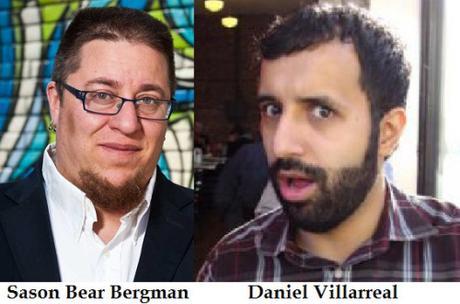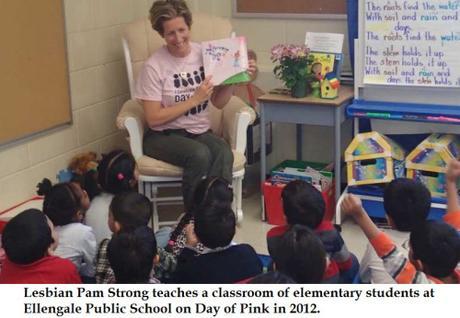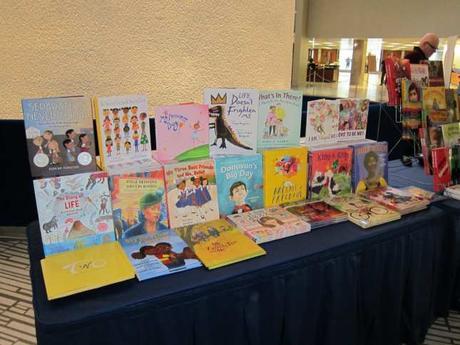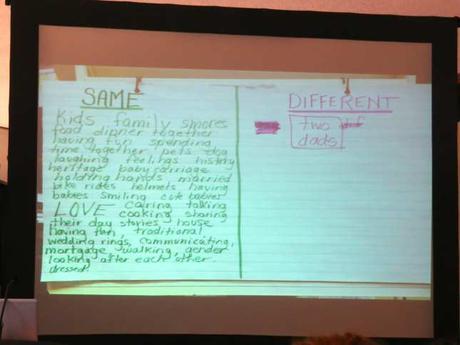Homosexual activists claim their proselytizing in schools are a way of combating bullying. But a number of homosexual activists have admitted that the movement’s goal is in fact to “indoctrinate” children into accepting the normalcy of the homosexual lifestyle.
Canadian gay activist Sason Bear Bergman, a woman who identifies as a transgender man, wrote in a March 2015 piece titled “I Have Come to Indoctrinate Your Children Into My LGBTQ Agenda (And I’m Not a Bit Sorry)”: “I am here to tell you: All that time I said I wasn’t indoctrinating anyone with my beliefs about gay and lesbian and bi and trans and queer people? That was a lie.” Bergman states she wants to make children “like us” even if that “goes against the way you have interpreted the teachings of your religion.”

In 2011 U.S. gay activist Daniel Villarreal penned a column for Queerty.com stating that the time had come for the homosexual lobby to admit to “indoctrinating” schoolchildren to accept homosexuality:
“Why would we push anti-bullying programs or social studies classes that teach kids about the historical contributions of famous queers unless we wanted to deliberately educate children to accept queer sexuality as normal?
We want educators to teach future generations of children to accept queer sexuality. In fact, our very future depends on it. Recruiting children? You bet we are.”
Homosexual activist Michael Swift wrote in 1987 in the Gay Community News that school children would become explicit targets for homosexual indoctrination:
“We shall seduce them in your schools…They will be recast in our image. They will come to crave and adore us.”
Pete Baklinski reports for LifeSiteNews, April 20, 2015, on just such an example of a lesbian teacher’s indoctrination of children as young as four to accept homosexual and same-sex marriage.
Pam Strong, a primary grade lesbian teacher from Ontario’s Ellengate Public School, revealed in a workshop at a homosexual activist conference for teachers in April 2015, which was attended by LifeSiteNews, how she uses her classroom to convince children as young as four to accept homosexual relationships. She said, “I started in Kindergarten. What a great place to start. It was where I was teaching. So, I was the most comfortable there.”

The conference, hosted by the homosexual activist organization Jer’s Vision, now called the Canadian Centre for Gender and Sexual Diversity, focused on the implementation of Bill 13 in Ontario classrooms. Bill 13, called by critics the ‘homosexual bill of rights,’ passed in June 2012 and gave students the right to form pro-gay clubs in their school, including Catholic schools, using the name Gay-Straight Alliance (GSA).
Strong, who is in an open relationship with another woman and who has been a teacher for about five years, focused her workshop on what she called the “power of conversation” for promoting LGBTQ issues in an elementary classroom, beginning with the junior kindergarten class.
She said she was reading a book King and King in the junior kindergarten class as a springboard to discuss her sexuality with the kids when she got to the part where the two princes become “married.” One of the boys in the classroom shouted: “They can’t do that! They can’t get married. They’re two boys.”
Strong recounted: “And I said, ‘Oh, yeah, yeah, they can. It’s right here on page 12.”
To which the boy replied, “Oh, yeah, I know Mrs. Strong, but that’s just a story. That’s not real life.”
“And I said: ‘It happens in real life too. I am married to a woman. I am gay. And I am in love with my wife.”
Strong said the young children “just all kind of went silent.” She then told them: “That may seem different to you, how many of you have heard of that before?”
“Not one hand went up,” she related. “And so I said: ‘That may seem different to you, but we’re not that different. Would you like to know about what I do with my family?”
“Yeah, tell us,” she recounted the children enthusiastically saying.
“I said, you know, we take our kids to the park. I swing them on swings,” she related, telling conference attendees that she could share things she did with her own children that “mostly likely all of their families did with them.”
Then she told the children: “We laugh together. We go grocery shopping together. I read to them. I tickle them, sometimes until they scream and laugh and when they cry, I hug them until they stop.”
Strong said that at that point, the boy who had used the word ‘gay’ looked and her and said: “Well, you’re a family.”
“And I said, yeah, we are,” she related. “And off I go to the next classroom.”
Strong said that she went from “class to class to class and continued with these conversations, and they were very powerful.” She said, “All my class is very used to who I am. My family picture is very proudly in my room now. On Mondays they quite often will say, ‘What did you do with your wife?’ It’s normal in my classroom.”
 Some of the pro-gay children’s books Strong uses with her students.
Some of the pro-gay children’s books Strong uses with her students.
Strong related another incident that happened last fall involving a new boy who had recently entered her grade 5 classroom and was unaware of Strong’s lesbianism. A conversation between herself and the students came up one day where it was mentioned that she was a lesbian. The new boy put his hands over his mouth and said, according to Strong: “Oh, my God, I think I’m going to puke.”
Strong said, “As I took the abuse — personally, as an individual – of those words, I also saw half of my class look at me with incredible concern. One student who was right in front of me already had tears in her eyes. And I noticed several other students who were looking at him. They were just very, very upset with this kid.”
The boy instantly became aware that “something he had said had just created this unbelievable tension in the room.” Strong said she told the boy that “I think that what you might not be aware of is that I am gay, and I am married to a woman, and my family has two moms.”
“His eyes just started darting around, and he was incredibly uncomfortable,” she related. “I looked at the other kids and I said: ‘Ok guys, what I want to ask you is: Am I upset with him?’ One little girl in my class put up her hand and said, ‘Mrs. Strong, I know you’re not upset with him, because he hasn’t had the benefit of our conversations.’ And I looked at my little friend, my ‘new’ friend, and I said: ‘But, we’re going to have one now.’”
Strong then directed her class to the board and asked them to write everything she had told them related to LGBTQ. “And my class all of a sudden popped up. ‘LGBTQ’ was on the board, ‘lesbian,’ and all the different words coming out there. And I sat back and said, ‘Let’s review.’ So, the last year and a half of ‘inclusive’ education came alive in my classroom.”
Strong told her workshop attendees that her “new little friend” is now a devoted champion of diversity. She boasted how he was the one in her class to count down the days to the pro-homosexual Day of Pink that took place earlier this month. When Strong took a photo of all the children wearing pink shirts in her classroom, she said the boy requested to be in the front.
 The chart Strong uses to show her students that same-sex partnerships are the same as male-female families.
The chart Strong uses to show her students that same-sex partnerships are the same as male-female families.
Strong said her indoctrination often doesn’t begin until months after she’d met the students. She waits for months before getting into what she called “difficult conversations” with students to convince them of the normality of her sexual preference for women. She first spends time “building a common vocabulary” in her classroom of words like “stereotype, prejudice, discrimination” so her students will be able to more readily conform to her pro-LGBTQ message. She has amassed a collection of “conversation starters” that she says helps get her started when presenting to her students the LGBTQ message. Pro-homosexual children’s books are one of her favorites.
“I use current events, news articles, advertisement are great for gender, especially with Kindergarten kids, pink and girl toys and all the rest of it. Commercials are great, I use one right now, the Honey Maid commercial.”
Strong meant the 2014 “Dad & Papa” commercial depicting two male homosexuals engaged with their children in normal family activities such as making s’mores, eating dinner around the table, and walking in the park. She watches the commercial with her students up to three times, asking them to make a list of all the similarities between the homosexual-partnership and their own families. The kids notice dozens of similarities, but usually only one difference, namely that the commercial has “two dads.” Other than this, the students “could not find one thing in that commercial that was different than their own families.” In this way she convinces the kids that a homosexual-partnership is identical to a family made up of a male and female. “There was nothing left for me to teach at the end of it. It was a huge learning for some kids,” she said.
H/t FOTM’s MomOfIV
See also:
- The Homosexual Manifesto of 1987
- The Gay Mafia and America’s aggressive homosexual agenda
- New study finds children of homosexual parents have more than twice the emotional problems as children of opposite-sex parents
- World Health Organization: HIV ‘exploding’ among homosexual men
- Christian protesters assaulted at Seattle homosexual Pridefest
~Éowyn

